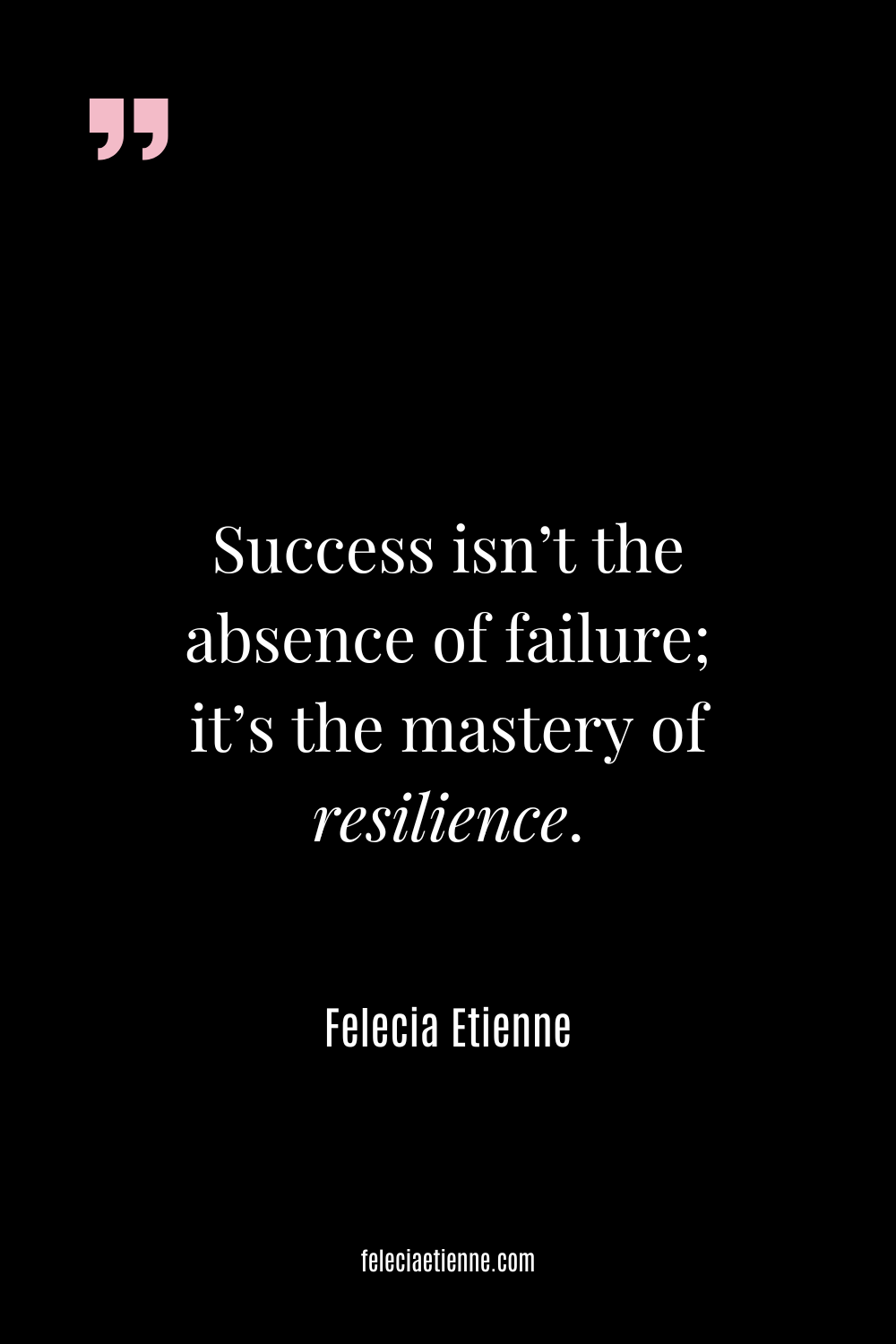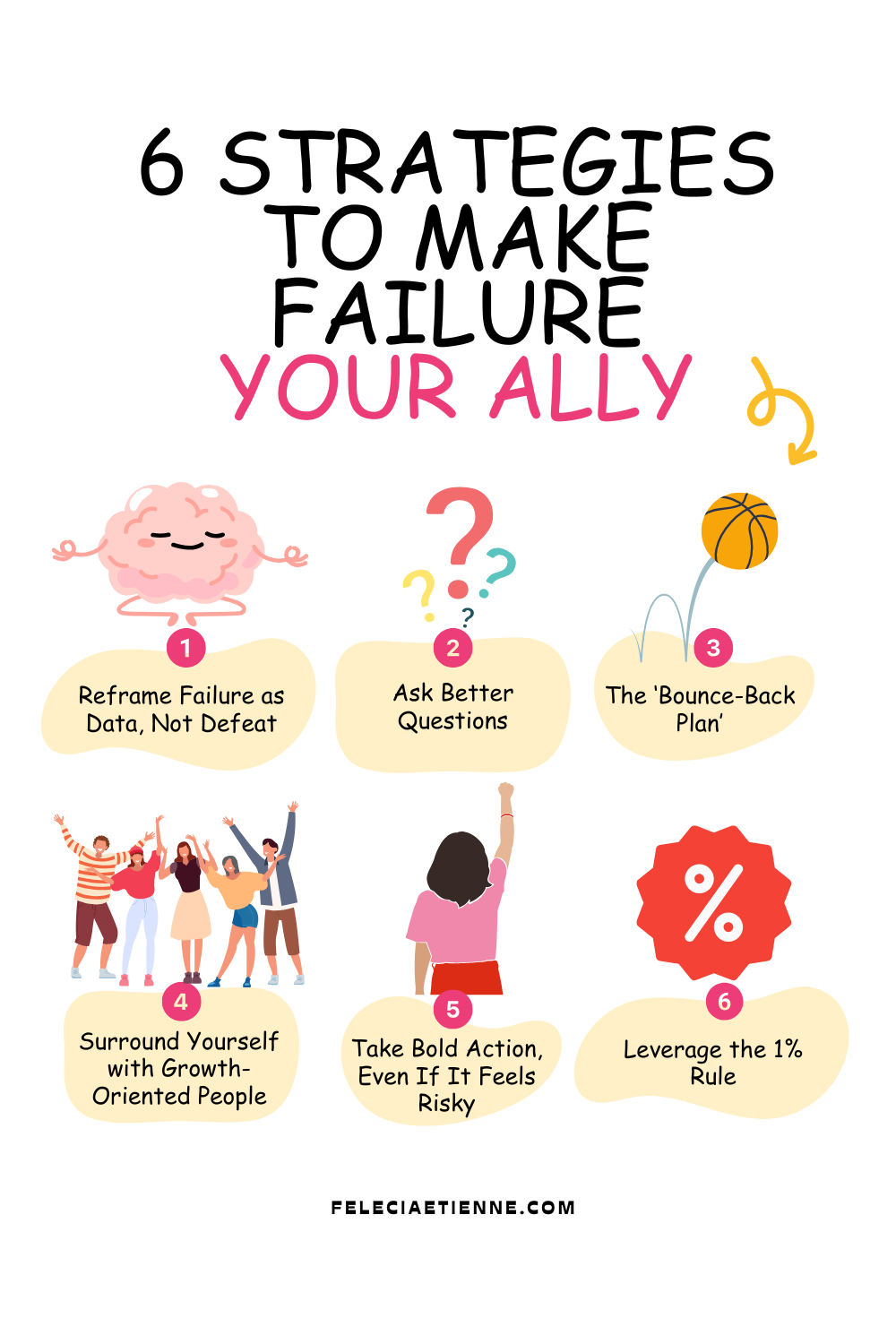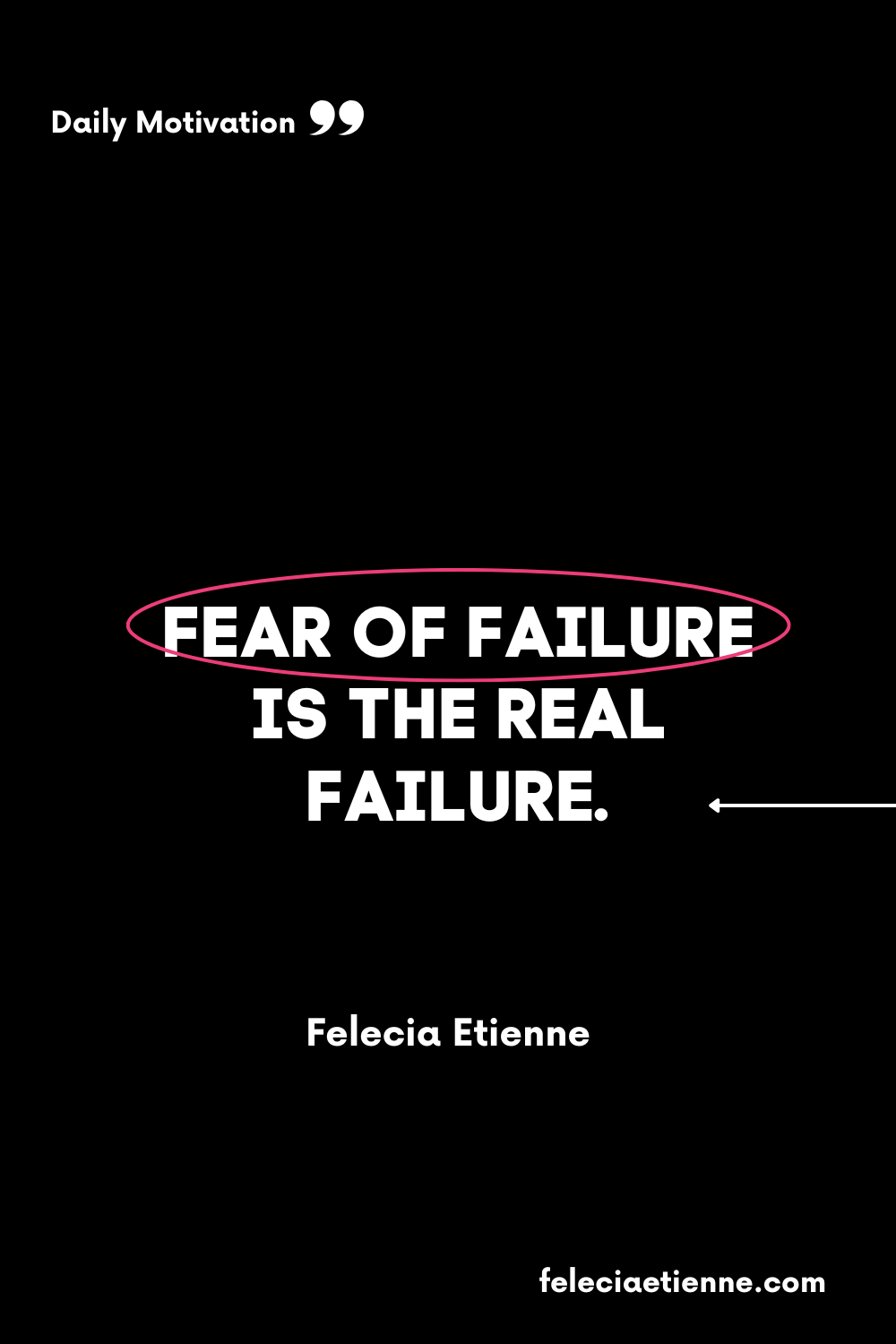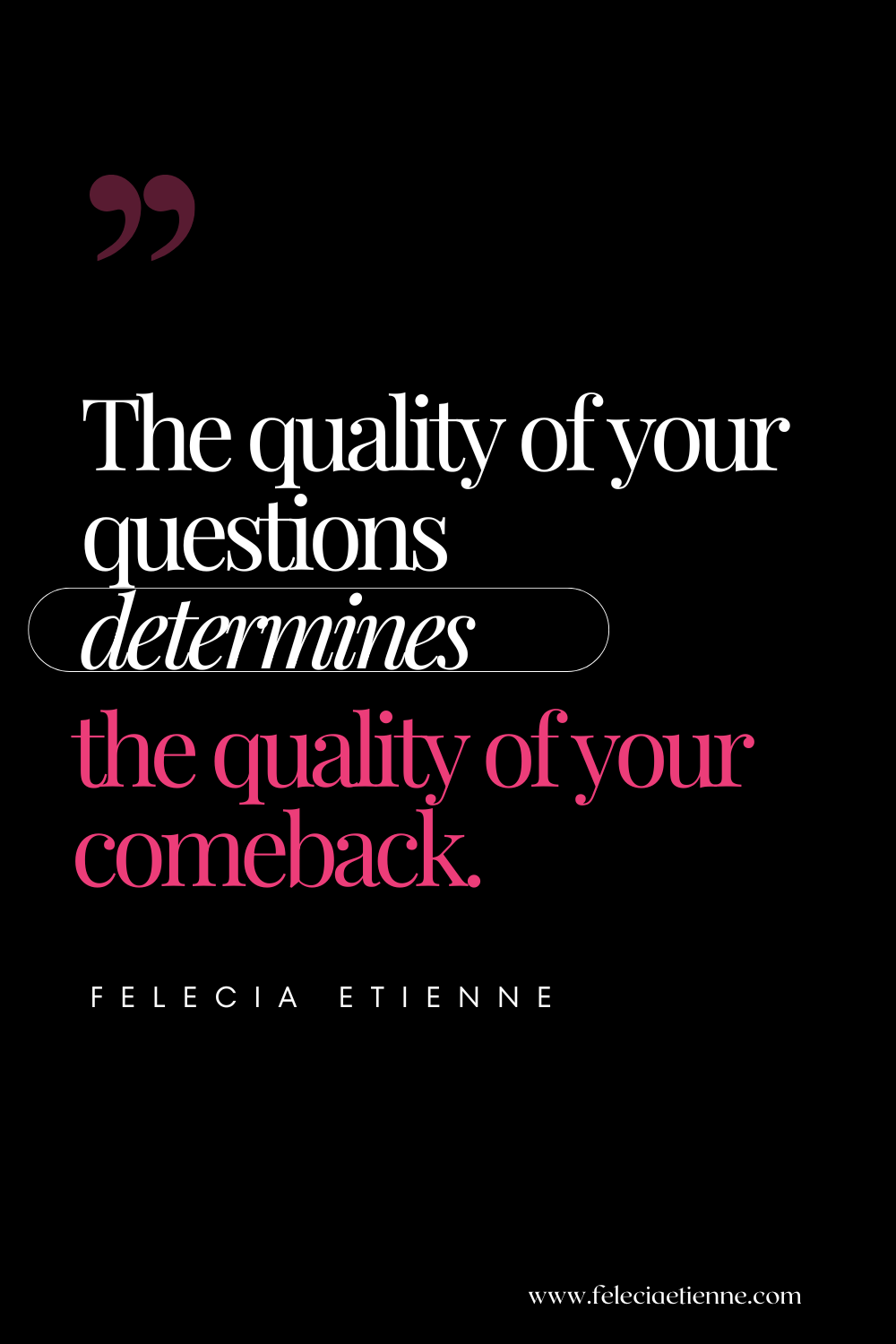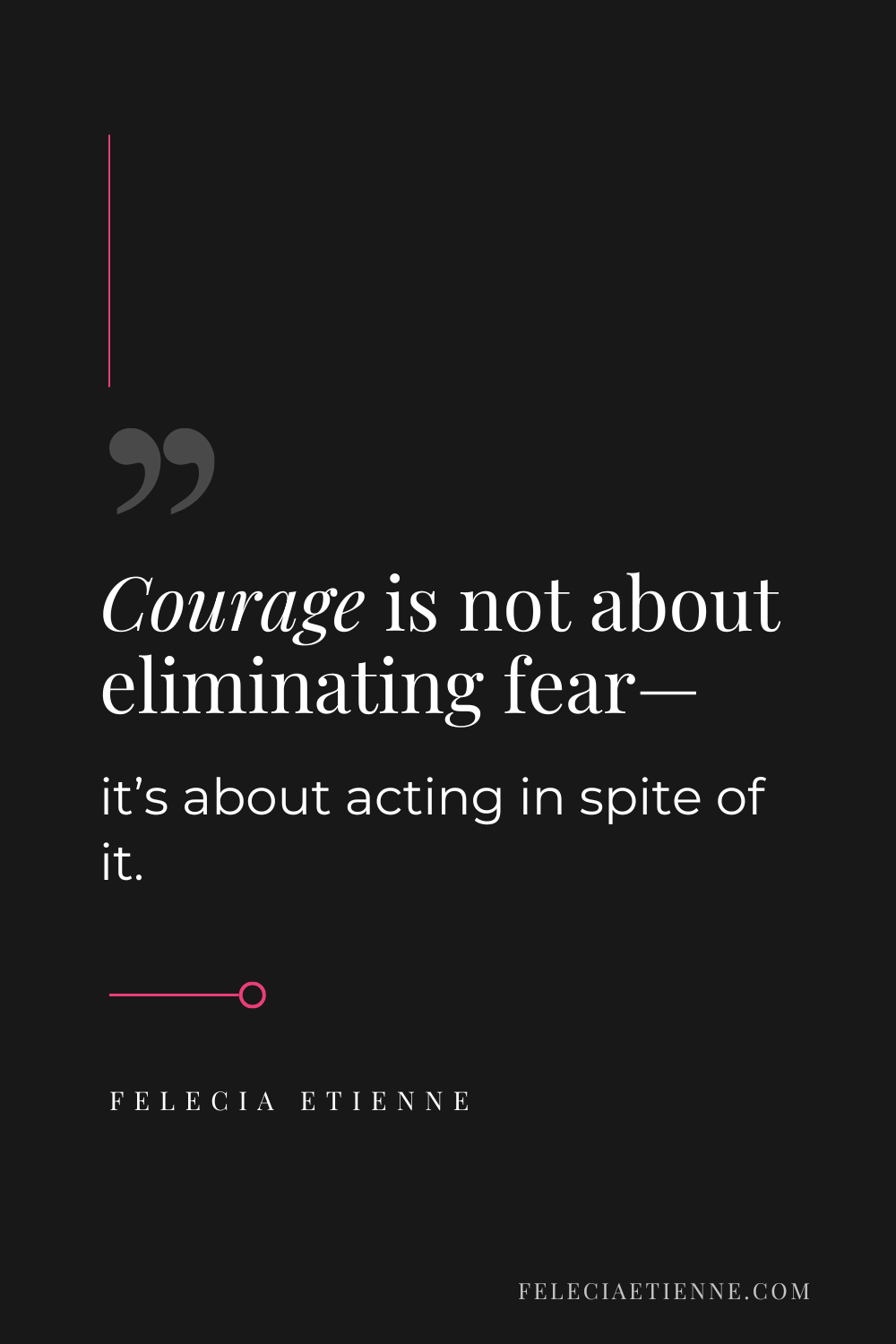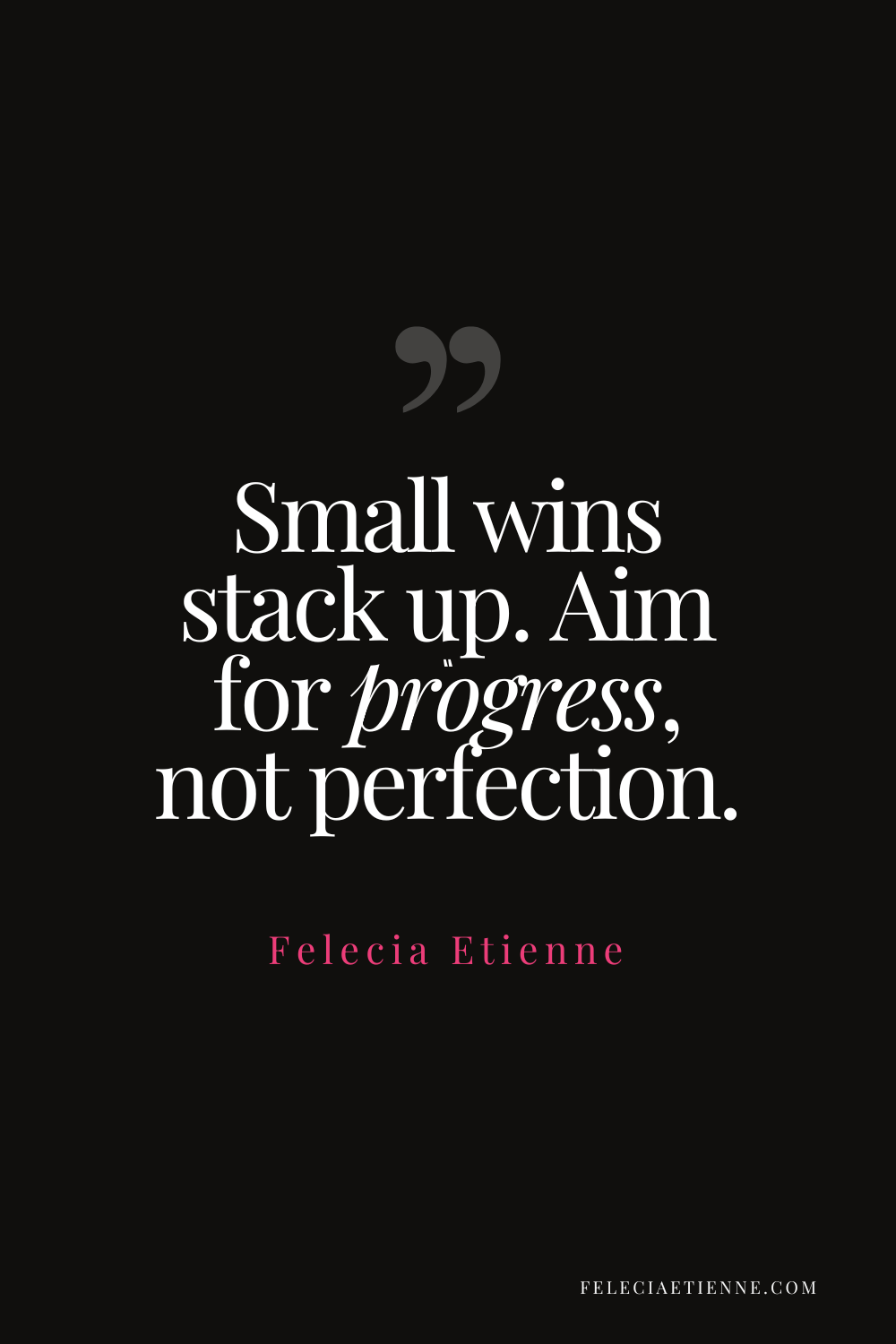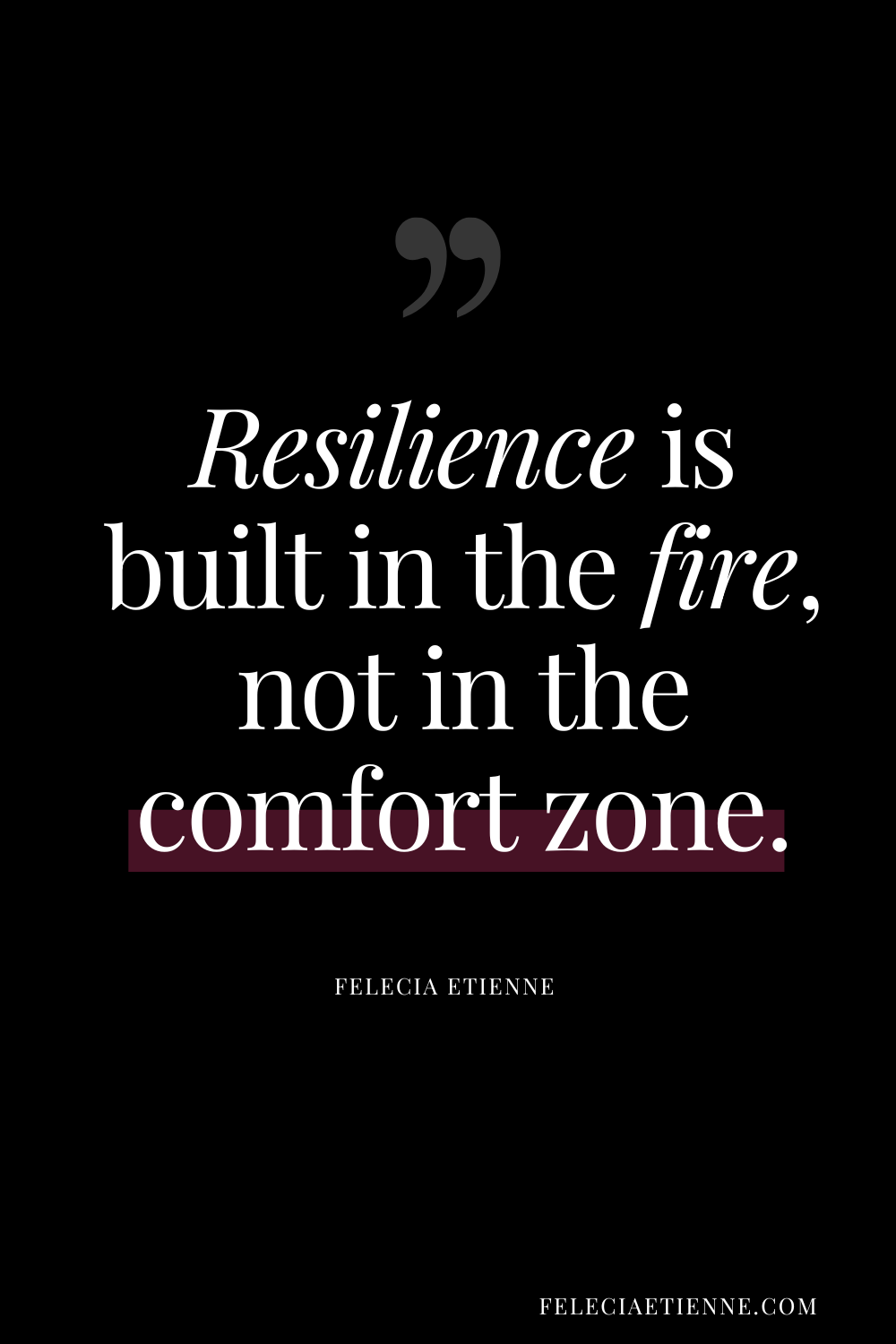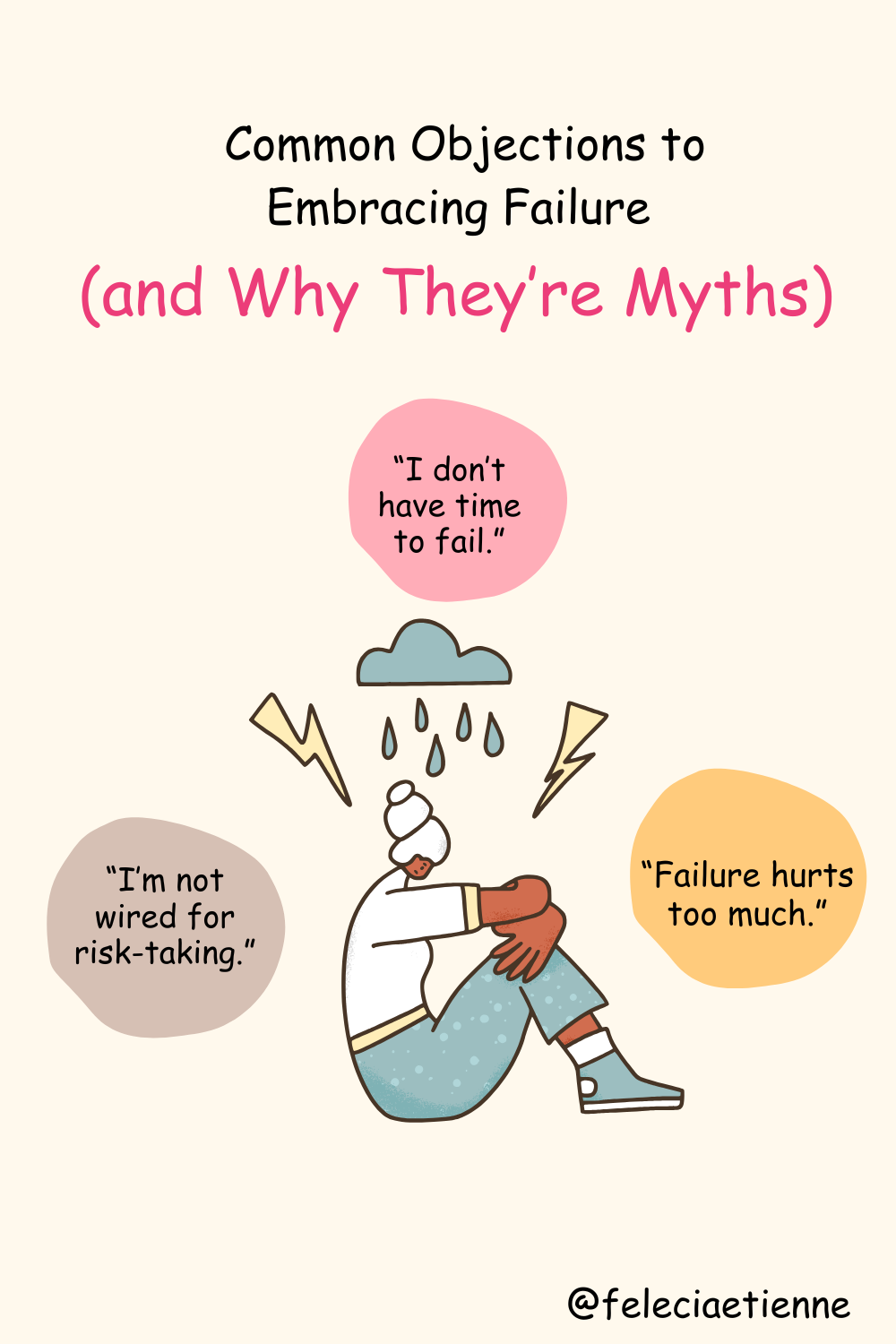Turn Failure Into Fuel: Strategies to Thrive and Succeed Against the Odds
What if we’ve been looking at failure all wrong? What if failure wasn’t this big, bold sign screaming, STOP—you’re not good enough, but instead a quiet nudge saying, Keep going—you’re learning something here. For high achievers, failure can feel heavy. It’s not just a failed project or missed opportunity—it can feel personal, like a reflection of who you are. But what if I told you that belief is selling you short?
Think about it. Oprah Winfrey was fired from her first TV job and told she wasn’t “fit for television.” Imagine if she’d taken that as the final word on her potential. Sara Blakely, the founder of Spanx, heard no so many times, she lost count. Yet every rejection taught her something new, pushing her closer to a billion-dollar business. And Elon Musk? His rockets literally blew up before SpaceX could make history. Their common thread? They didn’t view failure as the end of the road. They saw it for what it really is—data. A guide. A stepping stone.
Here’s the thing about failure—it offers feedback you can’t get any other way. With every stumble, you’re collecting vital information about what works, what doesn’t, and what needs to change. That’s not failure in the crippling, shame-filled way we’re often taught to see it; that’s progress.
This blog is going to take you deeper into this mindset shift. You’ll learn about the fascinating science behind resilience—how your brain actually gets stronger with challenges when you approach them the right way. And we’re not stopping there. You’ll walk away with actionable strategies to transform setbacks into something that propels you forward.
If failure has ever made you hesitant to take a leap or left you questioning your abilities, you’re in the right place. By the end of this, you’ll see failure in an entirely new light—not as a roadblock but as a powerful tool for growth. Buckle up—this mindset shift might just change everything.
The Hidden Gift of Failure
“You are not failing; you are fine-tuning your greatness.”
What if failure wasn’t your enemy but your secret weapon? You might not realize it, but every setback you face is rewiring your brain to be stronger, sharper, and more adaptable. Science has your back on this one—neuroplasticity, or the brain’s ability to rewire itself, shows that making mistakes actually strengthens your neural pathways. Think of it like your brain doing push-ups. Yes, it’s hard in the moment, but those "fail reps" make you better equipped for whatever comes next.
Take babies learning to walk as the perfect example. They’re the OG resilience champions. They fall—constantly. But with each stumble, their muscles grow, their balance improves, and their coordination sharpens. Do they quit after the first tumble? No. They don’t sit there thinking, Wow, maybe I’m just not cut out for this walking business. Instead, they keep going, and eventually, they’re running full speed through the house. Their progress isn’t despite the falls; it’s because of them. There’s a lesson in that for all of us.
The 'Failure Paradox'
“Success isn’t the absence of failure; it’s the mastery of resilience.”
Ever notice how the most successful people seem to have a highlight reel packed with failures? Oprah got fired. Elon Musk watched his rockets explode. Sara Blakely faced rejection so many times she lost count. This isn’t just coincidence—it’s a pattern. Welcome to the ‘Failure Paradox.’
Here’s why it works, and yep, there’s science behind it. Research shows that taking risks—and failing—can literally rewire your brain. When you mess up, your brain releases a burst of dopamine, a chemical that helps you process what went wrong and how to fix it. Scientists call this “error-based learning,” and it’s one of the most powerful ways we grow. Basically, every time you fail, your brain gets to work, making adjustments and helping you improve for the next try.
And let’s not forget grit, which psychologists like Angela Duckworth have studied extensively. Grit—a mix of passion and perseverance—is a bigger predictor of success than talent or IQ. Why? Because gritty people see failure as feedback, not a dead end. They keep showing up, learning, adapting, and moving forward.
Think of failure like a gym for your brain. Each setback is a mental workout, strengthening your problem-solving muscles and sharpening your focus. The more you fail (and bounce back), the better equipped you are to take on the next challenge. In fact, studies even suggest that people who fail early in their careers often outperform those who experience only success at first—their resilience muscle is stronger.
So, yeah, failure sucks in the moment. No one’s saying it’s fun. But it’s also the entry fee for success. The more risks you take, the more data you collect, and the closer you get to those big wins. Failure isn’t the end of the road—it’s a stepping stone.
Related article: From Hustle to Intentional Success: How to Work Smarter, Not Harder
Why We Fear Failure (and How to Rewire Your Mindset)
Here’s the thing about fear. It’s not just in your head; it’s literally in your brain. Since childhood, most of us have been taught to avoid mistakes at all costs. Get the wrong answer in school? You fail the test. Say the wrong thing? You risk rejection. Over time, your brain—more specifically, your amygdala (the fear center)—starts linking failure with danger. Hello, fear spiral.
But here’s the good news. Just like failure reshapes your brain for success, you can rewire your fear of failure too.
The 3-Second Rule to Shift from Fear to Action
When fear of failure creeps in, it’s so easy to get stuck in that loop of “What ifs.” What if I mess up? What if it goes wrong? What if I’m not good enough? But here’s a simple hack to break that cycle—the 3-Second Rule.
The moment you feel fear starting to take over, count down out loud, “3 2 1,” and then take immediate action. Send the email. Make the call. Pitch the idea. The trick is to interrupt the fear before it has a chance to paralyze you. And no, this isn’t just some cheesy motivational trick—there’s actual science behind why it works.
Here’s the deal: fear lives in the part of your brain called the amygdala. It’s the same part responsible for your fight-or-flight response. The countdown acts like a mental “pattern interrupt.” Instead of letting fear spiral and take over, you’re shifting control to your prefrontal cortex—the rational, decision-making part of your brain. It’s almost like pressing a reset button, snapping you out of overthinking mode and into action mode. Neuroscientists have even found that taking action, no matter how small, reduces the brain’s fear response because it proves to your brain that the situation isn’t actually a threat.
And let’s be real—fear of failure is usually worse than failure itself. What happens if you try and fail? You learn. You grow. You get back up. What happens if you never try? You stay exactly where you are. And you, my friend, were made for more than staying stuck.
Failure isn’t a flaw. It’s the forge where resilience, growth, and grit are built. So next time fear starts whispering in your ear, don’t let it win. Count it down: 3 2 1. And then ask yourself not, What if I fail? but, What am I missing out on by not trying? You’ve got this.
7 Strategies to Make Failure Your Ally
“Fear of failure is the real failure.”
Failure doesn’t have to be your nemesis—it can be your greatest ally if you know how to use it. Here’s how these seven strategies can help you rewrite the story you tell yourself about failure and transform it into your secret weapon for growth.
1. Reframe Failure as Data, Not Defeat
“You didn’t fail; you discovered another way that doesn’t work—now try again.”
Failure isn’t a dead-end street; it’s more like a traffic signal telling you to pause, recalibrate, and choose another route. Every setback holds a little nugget of wisdom—if you’re willing to look for it. Instead of sitting in frustration thinking, Why me? ask yourself, What did this teach me? Think of it like testing a recipe. If the cake didn’t rise, then maybe it’s time to tweak the baking soda. One flop doesn’t define your ability—it refines your process. The sooner you detach failure from your sense of self-worth, the sooner you’ll see it for what it truly is—just feedback.
2. Ask Better Questions
“The quality of your questions determines the quality of your comeback.”
You know the saying, garbage in, garbage out? Well, the same goes for your thoughts. Poor questions like, Why am I such a mess? or Why can’t I just get this right? keep you stuck. Instead, ask yourself empowering questions like, What worked here? What didn’t? or What could I try next?
Every successful person you admire approaches failure with curiosity. They don’t sit around sulking—they investigate, experiment, and adapt. Start thinking like a detective instead of a judge. The better your questions, the better your answers, and the better your next move.
3. The ‘Bounce-Back Plan’
“Growth doesn’t come from getting it right; it comes from getting back up.”
Failure is inevitable—so why not prepare for it? A bounce-back plan isn’t about avoiding failure; it’s about knowing what to do when it shows up. First, give yourself permission to feel the disappointment (yes, feel it, don’t shove it down). Then, ask yourself, What’s my next best move?
For example, if a new product launch didn’t hit your goal, don’t waste energy beating yourself up. Analyze the results. Maybe you learned that your messaging could improve or that a different audience segment might be interested. The key is to process the setback, then pivot with purpose.
Related article: Fear of Failure|5 ways to overcome IT and take action
4. Surround Yourself with Growth-Oriented People
“The people you surround yourself with will either shrink your courage or fuel your fire.”
You’ve probably heard the phrase, you are the average of the five people you spend the most time with. Well, this is truer than we realize. If you’re hanging with people who avoid risks or see failure as catastrophic, guess what? That mindset will rub off.
Instead, find people who lift you up, challenge your thinking, and encourage you to go after bold goals—even if mistakes are part of the path. Whether it’s a mentor, a mastermind group, or friends who believe in potential over perfection, your circle matters. Build one that fuels your fire, not your fear.
5. Take Bold Action, Even If It Feels Risky
“Courage is not about eliminating fear—it’s about acting in spite of it.”
Nobody feels 100% fearless before taking a big leap—and that’s okay. Courage isn’t about being fearless; it’s about doing the thing even with the fear sitting in the passenger seat. The beauty of bold action is that it builds momentum and confidence with every step.
For example, say you’ve always wanted to start your own business, but the thought of failing freezes you. Start small—take one meaningful step, like creating a basic website or talking to someone who has already walked the path. Every bold move chips away at fear and rewires your brain to see failure as less of a threat.
Related article: Breaking the Chains of Tolerance: How High Achievers Can Transform Chaos into Clarity
6. Leverage the 1% Rule
“Small wins stack up. Aim for progress, not perfection.”
Here’s the truth you need to hear—you don’t have to go from zero to hero overnight. The idea of overnight success? Total myth. Instead, aim to improve just a little bit every day—1% better than yesterday. Why 1%? Because small, consistent improvements add up. It’s science. Researchers call it the “aggregation of marginal gains,” and it’s how small changes compound over time to create big results. Think of it like compounding interest, but for your personal growth.
Let’s say your goal is to get better at public speaking. Don’t dive straight into a 500-person conference. Start by practicing a 5-minute talk with a trusted friend. Those small wins? They’re the building blocks of something bigger. The key is consistency, not perfection. Progress > perfection, every single time. Keep showing up, even if it’s just 1% better than yesterday—you’ll be amazed at where it takes you.
7. Build an Anti-Fragile Mindset
“Resilience is built in the fire, not in the comfort zone.”
Nassim Taleb describes anti-fragility as systems that actually grow stronger under stress—and guess what? You can apply the same concept to your mindset. Science backs this up, too. Research shows that stress, when managed properly, can actually enhance resilience and problem-solving skills. Psychologists call this "post-traumatic growth," where tough experiences lead to greater personal development.
So, when failure hits, rather than just trying to recover, ask yourself, How can I grow because of this? Think of failure like a mental workout—it forces you out of your comfort zone and strengthens parts of you that easy wins never touch. For example, if a client backs out of a deal, use it as a chance to refine your pitch or sharpen your offer for next time.
Here’s the thing: your brain is wired for adaptability. Studies on neuroplasticity show that challenges literally reshape your brain, making you more resourceful and creative over time. The goal isn’t just to bounce back—it’s to bounce back stronger. Every challenge you face is another rep in the gym of life, building your mental muscles for future success.
Common Objections to Embracing Failure (and Why They’re Myths)
When it comes to failure, excuses fly fast—usually fueled by fear. But what if those objections were just myths holding you back? Here’s why they don’t hold up and how to shift your perspective.
“I don’t have time to fail.”
Picture this—you’re sprinting towards a goal, and you think failing will slow you down. But here’s the truth: failure is actually a shortcut to success. Think of it as your GPS recalculating your route. Every time you fail, you’re learning what doesn’t work, which helps you zero in on what does.
Take Thomas Edison, for example. He famously said, “I have not failed. I’ve just found 10,000 ways that won’t work.” His “failures” weren’t wasted time; they were stepping stones to the light bulb. The quicker you’re willing to try, fail, and course-correct, the faster you’ll reach mastery. It’s not about avoiding failure—it’s about failing smarter.
“I’m not wired for risk-taking.”
Some people are naturally more cautious, and that’s okay. But here’s a little neuroscience secret: risk tolerance isn’t fixed. It’s a skill you can build, like strengthening a muscle.
Your brain adapts the more you step outside your comfort zone. Scientists call this “exposure therapy.” The first leap into the unknown feels terrifying, but the next time? A little less scary. Over time, your brain rewires itself to see risk-taking as less of a threat and more of an opportunity.
Start small. Try attending that networking event you’ve been avoiding or pitching an idea you’re unsure about. Each time you face discomfort, you’re training your brain to handle risk with more confidence. Remember, courage isn’t born—it’s built.
“Failure hurts too much.”
Everyone feels the sting of failure—it’s embarrassing, frustrating, even heartbreaking at times. But here’s the kicker: emotional resilience isn’t innate. You can develop it with practice.
Think of resilience like a rubber band. The more you stretch it (without snapping), the more elastic it becomes. The same goes for your ability to bounce back. Start small—practice reflecting on setbacks and looking for silver linings. Maybe a missed opportunity pushed you towards something better. Maybe a mishap taught you a skill you wouldn’t have learned otherwise.
Athletes are a great example of this. They lose games, miss shots, and make mistakes all the time. But instead of wallowing, they review the footage, adjust their strategy, and come back stronger. With time and effort, failure doesn’t sting as much—it becomes part of the process.
Related article: Turning Challenges Into Growth Opportunities: Unlocking the Power of Mental Toughness
Q&A: Your Top Questions About Failure & Success
1. How do I know when to persist versus pivot?
Here’s the golden question, right? Persisting versus pivoting can feel like a tough call, but the answer lies in what failure is teaching you. If every setback unveils something new—a better approach, untapped potential, or clear progress—then persistence is your best friend. Think of Thomas Edison and his relentless pursuit of the light bulb; every “failure” was another step closer to success.
But if you’re stuck in a loop, repeating the same missteps, then it’s time to pivot. It’s like being in a maze. If you’ve hit the same wall over and over, don’t keep charging forward—find a new path. Pivoting isn’t giving up; it’s putting your energy into something that has a better shot at working.
2. What’s the fastest way to recover from a major setback?
One word—reframe. Sure, your setback stings, but instead of letting it knock you down, take a step back and look for the lesson. Ask yourself, What can I learn? What can I do differently next time? Then shift into action. Even one small step forward can rebuild your momentum.
Picture a runner tripping mid-race. They don’t sit there analyzing the crack in the pavement—they get up, dust off, and keep moving. Your goal isn’t to ignore the setback but to use it as a jumping-off point. Remember, it’s not the fall that defines you—it’s the way you rise.
3. How can I teach my kids or employees to embrace failure?
The secret? Celebrate effort over results. Instead of focusing on winning, praise the process—whether it’s brainstorming bold ideas, trying something new, or sticking with a hard task.
For kids, try this after-school question switch-up. Instead of asking, What did you get right today? ask, What did you fail at today, and what did you learn? This normalizes failure and helps them see it as part of growth.
For your team, encourage problem-solving over perfectionism. Create a culture where trial and error is just part of the process. Share your own stories of flops turned into lessons—it shows them they don’t have to fear failure because even leaders stumble before they soar.
4. What’s the best mindset shift to instantly stop fearing failure?
Here’s a powerful reminder to keep in your back pocket—“Failure isn’t a judgment; it’s feedback.” Think of it like getting a red-pen markup on a draft. It doesn’t mean you’re incapable of writing a great paper—it’s just showing where tweaks are needed.
When you stop seeing failure as a personal condemnation and start treating it as neutral feedback, its power to paralyze you evaporates. Failure is simply data—what you do with that data is what counts.
5. How do I build confidence when failure has shaken me?
Start small, and focus on stacking wins. Confidence doesn’t come from getting everything right the first time—it’s something you build, brick by brick, through consistent action. Just like lifting weights strengthens your muscles, each small victory—nailing a meeting, following through on a habit, hitting even a tiny goal—adds to your confidence bank.
Practical tip? Pick something achievable, even laughably small, and make it your mission to succeed at it today. Once you do, rinse and repeat. These little wins snowball, and soon, that shaken confidence won’t just recover—it’ll come back stronger than before.
Related Article: Building Unshakeable Confidence: 19 Strategies for Cultivating Self-Confidence
6. Can failure really be a sign that I’m on the right path?
Absolutely, yes. If you never fail, you might not be playing big enough. Growth only happens when you stretch yourself, and stretching always comes with a bit of discomfort—and, yes, the occasional misstep. Think of failure like the rumble strip on the highway—it’s not pushing you off course; it’s nudging you to adjust so you don’t end up in the ditch.
Some of the best ideas, businesses, and breakthroughs have come after a failure. If you’re failing, it means you’re trying. You're taking swings at big opportunities. And that means you're much closer to hitting it out of the park than someone who never steps up to the plate.
Conclusion + Call to Action
Failure isn’t your enemy; it’s your greatest teacher, the mentor you never knew you needed. The truth is, the difference between success and standing still isn’t about avoiding failure—it’s about how you respond to it. Do you wallow, or do you rise? Do you see it as the end or as a new beginning?
Here’s a challenge for you—think back to a recent failure. Don’t wince, don’t shy away from it, and definitely don’t start with self-blame. Instead, dig deeper. Ask yourself, What did this teach me? How can I use this lesson to move forward? Remember, reframing failure isn’t just an intellectual exercise; it’s your launching pad toward bigger and better things.
But you don’t have to do it alone. If you’re ready to turn failures into fuel and make the next year the one where everything shifts—not by luck, but by intentional action—then it’s time to take the next step.
Join me at the Best Year Yet Edition of the Productivity Powerhouse Summit!
Here’s what you’ll gain over 4 days with myself and 14+ brilliant experts by your side:
✅ Tools that turn your mind into your greatest ally, not your biggest critic.
✅ Systems and habits designed to reduce overwhelm and create focus.
✅ Neuroscience-backed strategies to rebuild and amplify your confidence.
✅ A clear, step-by-step plan to move from where you are now to where you’ve always wanted to be.
🎯 Here’s the thing—you don’t need to have all the answers to start. You just need the courage to take that first step. Together, we’ll build momentum, one intentional action at a time.
The question isn’t if you’re going to achieve more. The question is whether you’ll take this chance to rewire your mindset and create a future on your terms.
[Click here to register now and make this your Best Year Yet!]
Your next “failure” could be the spark that changes everything—and I can’t wait to show you how. 🌟
P.S. If you're looking for deeper support as you navigate this transformative journey, here are two ways I can help:
Master Your Mindset: I specialize in helping high achievers, business owners, and professionals break into the top 1% of their field by mastering their mindset and boosting their performance. When you're ready to take your success to the next level, DM me the word "Edge," and let's start that conversation.
Free Resource for Change: Don’t let negative emotions hold you back! Grab my Self-Sabotage Solution Checklist—a free tool designed to help you identify and release the limiting beliefs that no longer serve you. Take the first step toward a more empowered you today!
Embrace this opportunity to shift from burnout to brilliance. Your path to sustainable success starts now!
Ready to achieve your dream life? I’m Felecia Etienne, your go-to Certified High-Performance Coach™ and Mental Fitness Coach. Let me take you on a transformative journey with a Complimentary Unlock Your Performance EDGE call. This isn’t just a chat—it’s your ticket to the high-performance tools and techniques I’ve shared with my coaching clients.
In this personalized call, you'll:
- Dive into your dreams and goals, tackle obstacles, and bridge the gap between where you are and where you want to be.
- Uncover and combat triggers of self-sabotage while discovering untapped strengths.
- You'll walk away with actionable strategies that deliver immediate impact
Equip yourself with the strategies, resources, and support needed to shatter obstacles, self-sabotaging, narrow the gap, and transform your ambitions into tangible achievements. Ready to escape inertia and boost your impact? Book a private and confidential session. Unlock Your Performance EDGE with Felecia. Let's unlock your potential together.
To find out more about Felecia, you can visit her website at feleciaetienne.com.
Social Media Handles:




